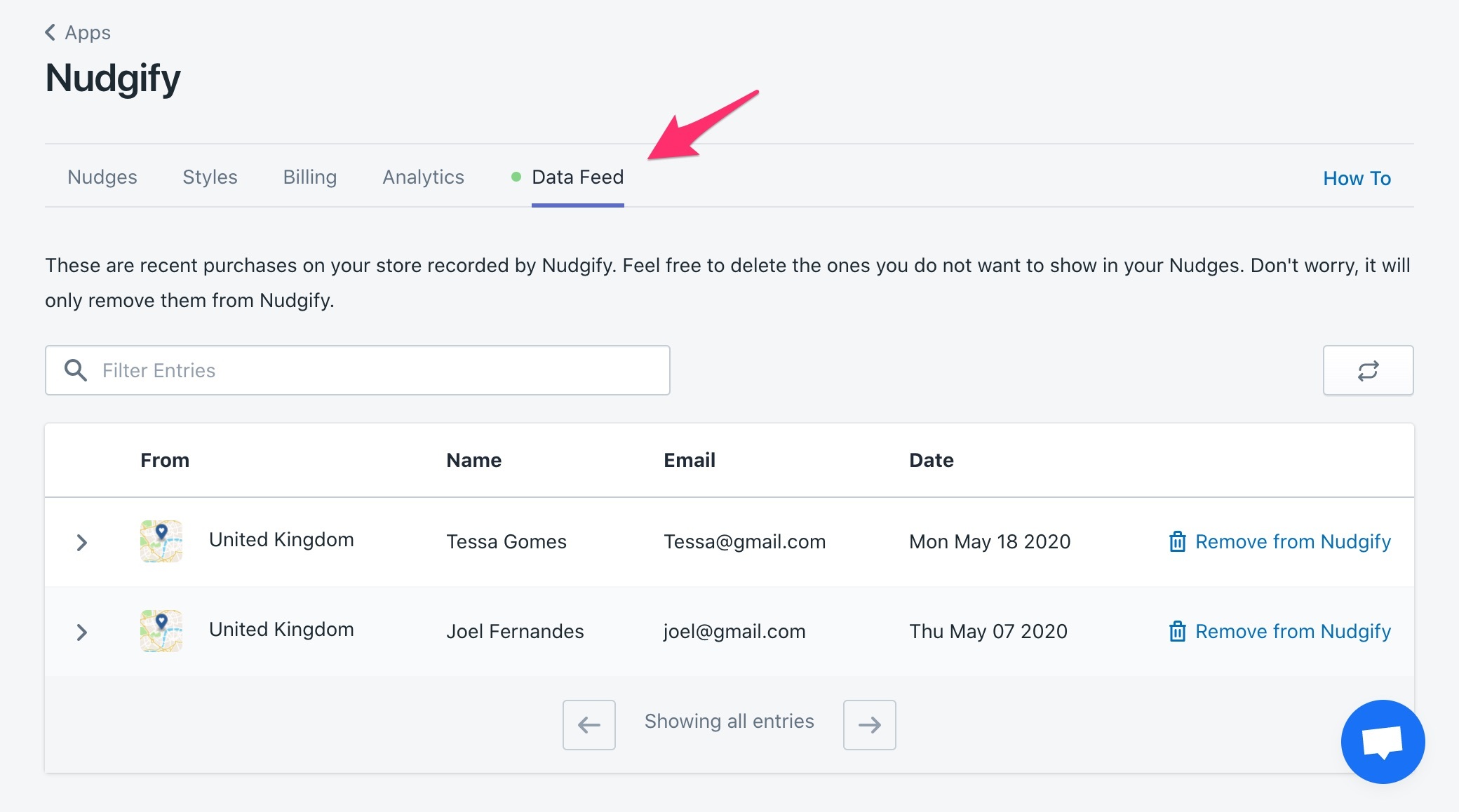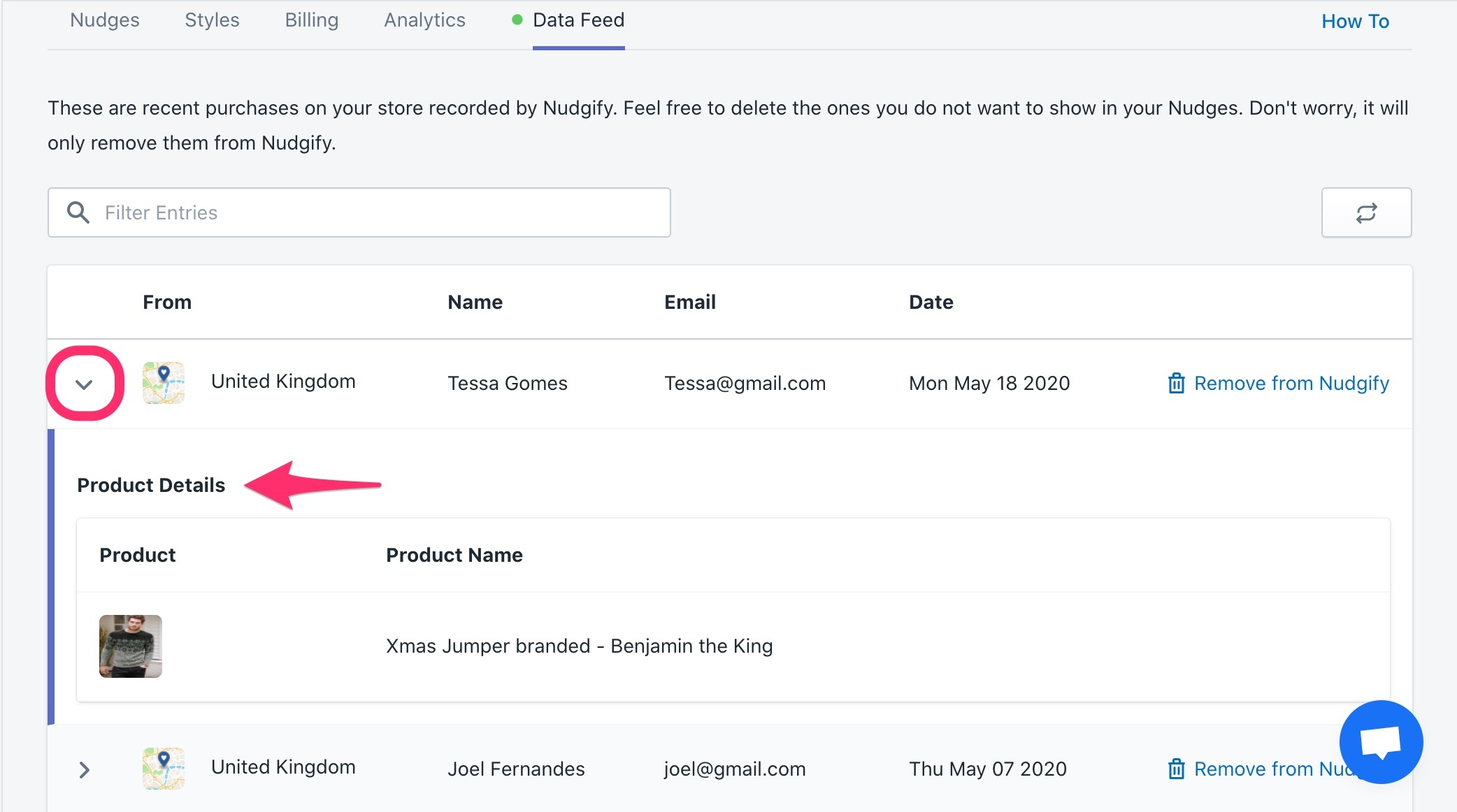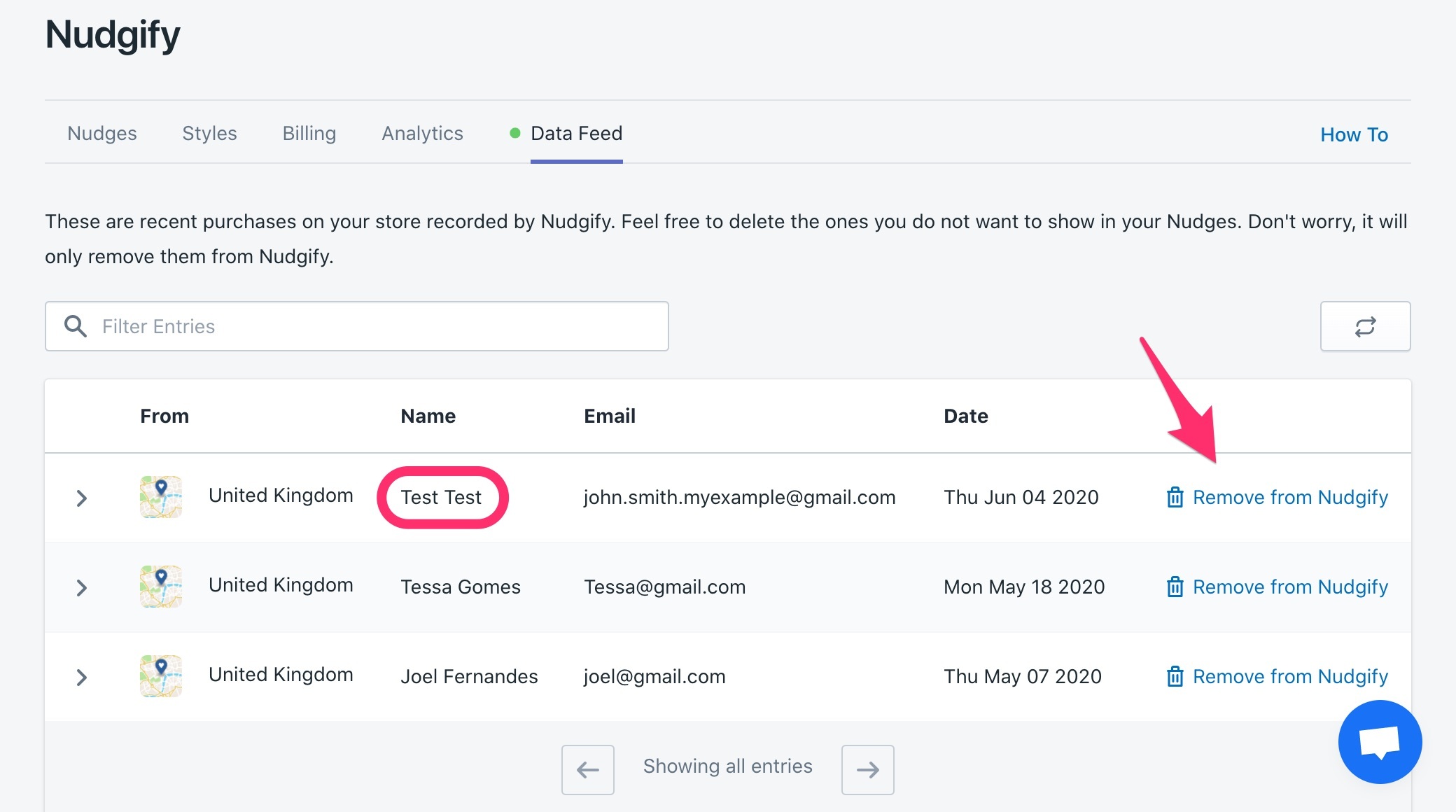Your Recent Activity Nudges collect and show real data on your sales. With your Data Feed, you can view and manage the sales that show in your Nudges. It allows you to delete the purchases you don’t want to show and keep your best ones.
View your Data Feed
In the Data Feed tab, you can see an overview of the purchases Nudgify collects for your Recent Activity Nudges. It show the country, name, email address of the customers, and the date the purchase was made. The Data Feed only shows purchases made since you added Nudgify to your store. Any historical purchases are not collected or shown by Nudgify.

You can also see details of the product(s) they bought, when you click the expansion arrow on the left.

Your Date Feed shows 10 purchases per page. To see more pages, use the arrows on the bottom of the Feed.

Delete purchases you don’t want to show
If there is any data amongst the conversions in the Data Feed that you don’t want to show, such as conversions with nonsense names, you can delete them from your Feed. This way, that particular conversion will not show in a Nudge on your site.
Don’t worry, the purchase will only be deleted from Nudgify, not from your Shopify store.

Impact on ‘Purchases Summary Nudges’
Bear in mind that when you delete purchases, the amount of purchases shown in the Purchase Summary Nudge will go down as well.
For example, if you had 10 sales in the last day, and you remove a purchase you don’t want to show, the Purchase Summary Nudge now will display “9 people bought this product within the last day” instead of “10 people bought this product within the last day”.
Impact on ‘Selling Fast Nudges’
Selling fast Nudges calculate and show how fast a product is likely to sell out. Nudgify combines data from your stock room and from your recent purchases to calculate this. Removing recent purchases from your Data Feed impacts this calculation.
As a result, the Selling Fast Nudge might show a longer timeframe, for example “this product is likely to be sold out in less than 1 day”, instead of “this product is likely to be sold out in less than 12 hours”.
